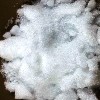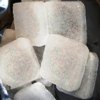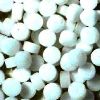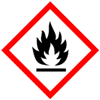Camphor BP Ph Eur USP Grades, Crystals Tablets Slabs Blocks Manufacturers, with SDS GHS MSDS Sheet |
Supplier, Manufacturer, Exporter of Camphor BP Ph Eur USP Grades, Crystals Tablets Slabs Blocks, Muby Chemicals of Mubychem Group, established in 1976, is the original manufacturers of Specialty Chemicals, Pharmaceutical Excipient, Fragrance Food & Flavor chemicals, Reagent Grade Chemicals, Shale Gas Fracturing Chemicals in India. Mubychem Group has several manufacturing facilities spread across Western India and world wide contacts and toll manufacturers. We are exporting globally to countries like USA, Canada, Europe, UAE, South Africa, Tanzania, Kenya, Egypt, Nigeria, Cameroon, Uganda, Turkey, Mexico, Brazil, Chile, Argentina, Dubai, Korea, Vietnam, Thailand, Malaysia, Indonesia, Australia, China, Germany, France, Italy Portugal, Bangladesh, etc. The products are offered as per required specifications and in correct shape and size in mm or meshs or microns as specified by the buyer. The participating units have one or more accreditations like FDA - cGMP and GLP approval, ISO-9001 Certified, "REACH" Registered, ISO-14001, ISO/IEC 17025, ISO-22000, FSSC 22000, ISO 45001, Kosher Certified, Halal Certified, HACCP, FSSAI. We offer Commercial Pure & IP BP EP Ph Eur USP NF JP FCC Food Grade Analytical Reagent Grades of Chemicals |
| Bookmark this Web Site -- or -- Email This Page Info to a Colleague or Yourself |
Search our website here:







Camphor: CAS Number: 76-22-2 (464-49-3 or Natural Camphor), EINECS EC Number: 200-945-0, Molecular Formula: C10H16O, Molecular Weight: 152.24, HS Code ---**
How big is your requirement or how small
We serve it all.
Specifications, Safety Data Sheet, Manufacturing process details, Wholesale retail buy sell prices, Uses etc available on line in these pages for Camphor.
For SDS MSDS Sheet Click
SDS MSDS Sheet of Camphor Manufacturers
Camphor
Pure BP Ph Eur USP Grades, Crystals Tablets Slabs Blocks Suppliers




Camphor is a waxy, flammable, transparent solid with a strong aroma. It is a terpenoid with the chemical formula C10H16O. It is used for its scent, as an ingredient in, as an embalming fluid, for medicinal purposes, and in religious ceremonies. Camphor has been used in traditional medicine from time immemorial in countries where it was native. Camphor was used in ancient Sumatra to treat sprains, swellings, and inflammation. It has long been used as a medical substance in ancient India, where it generally goes by the name Kapur. Camphor also was used for centuries in Chinese medicine for a variety of purposes. In 1980, the US Food and Drug Administration set a limit of 11% allowable camphor in consumer products, and banned products labeled as camphorated oil, camphor oil, camphor liniment, and camphorated liniment. Camphor is widely used in Hindu religious ceremonies. It is put on a stand called 'karpur dāni' in India. Aarti is performed after setting fire to it usually as the last step of puja.
Natural Camphor BP Ph Eur Grade
(D-Camphor, Ph. Eur. monograph 1400)
C10H16O --- 152.2 --- CAS 464-49-3
DEFINITION
(1R,4R)-1,7,7-Trimethylbicyclo[2.2.1]heptan-2-one.
CHARACTERS
Appearance: White or almost white, crystalline powder or friable, crystalline masses. Highly volatile even at room temperature.
Solubility: Slightly soluble in water, very soluble in alcohol and in light petroleum, freely soluble in fatty oils, very slightly soluble in glycerol.
IDENTIFICATION
First identification: A, C.
Second identification: A, B, D
A. Specific optical rotation.
B. Melting point: 175 C to 179C.
C. Infrared absorption spectro-photometry.
D. Dissolve 1.0 g in 30 mL of methanol. Add 1.0 g of hydroxylamine hydrochloride and 1.0 g of anhydrous sodium acetate. Boil under a reflux condenser for 2 h. Allow to cool and add 100 mL of water. Filter, wash the precipitate obtained with 10 mL of water and re-crystallize from 10 mL of a mixture of 4 volumes of alcohol and 6 volumes of water. The crystals, dried in vacuo, melt at 118C to 121C.
TESTS
Carry out the weighing and dissolution rapidly.
Solution S: Dissolve 2.50 g in 10 mL of alcohol and dilute to 25.0 mL with the same solvent.
Appearance of solution: Solution S is clear and colourless.
Acidity or alkalinity: To 10 mL of solution S add 0.1 mL of phenolphthalein solution. The solution is colourless. Not more than 0.2 mL of 0.1 M sodium hydroxide is required to change the colour of the indicator.
Specific optical rotation: + 41.0 to + 44.0, determined on solution S.
Related substances: To pass the test by gas chromatography.
Halogens: Maximum 100 ppm.
Residue on evaporation: Maximum 0.05 per cent.
Water: Dissolve 1 g in 10 mL of light petroleum. The solution is clear.
IMPURITIES
A. 2,6,6-trimethylbicyclo[3.1.1]hept-2-ene (α-pinene),
B. 2,2-dimethyl-3-methylenebicyclo[2.2.1]heptane (camphene),
C. 6,6-dimethyl-2-methylenebicyclo[3.1.1]heptane (β-pinene),
D. 1,3,3-trimethyl-2-oxabicyclo[2.2.2]octane (cineole),
E. 1,3,3-trimethylbicyclo[2.2.1]heptan-2-one (fenchone),
F. exo-1,3,3-trimethylbicyclo[2.2.1]heptan-2-ol (fenchol),
G. exo-2,3,3-trimethylbicyclo[2.2.1]heptan-2-ol (camphene hydrate),
H. endo-2,3,3-trimethylbicyclo[2.2.1]heptan-2-ol (methylcamphenilol),
I. exo-1,7,7-trimethylbicyclo[2.2.1]heptan-2-ol (exo-borneol),
J. endo-1,7,7-trimethylbicyclo[2.2.1]heptan-2-ol (endo-borneol).
Racemic Camphor BP Ph Eur Grade
C10H16O --- 152.2 --- 76-22-2
Action and use: Counter-irritant.
DEFINITION
(1RS,4RS)-1,7,7-Trimethylbicyclo[2.2.1]heptan-2-one.
CHARACTERS
Appearance: White or almost white, crystalline powder or friable, crystalline masses, highly volatile even at room temperature.
Solubility: Slightly soluble in water, very soluble in ethanol (96 per cent) and in light petroleum, freely soluble in fatty oils, very slightly soluble in glycerol.
IDENTIFICATION
First identification: A, C
Second identification: A, B, D
A. Optical rotation.
B. Melting point: 172C to 180C.
C. Infrared absorption spectrophotometry.
D. Dissolve 1.0 g in 30 mL of methanol. Add 1.0 g of hydroxylamine hydrochloride and 1.0 g of anhydrous sodium acetate. Boil under a reflux condenser for 2 h. Allow to cool and add 100 mL of water. A precipitate is formed. Filter, wash with 10 mL of water and re-crystallize from 10 mL of a mixture of 4 volumes of ethanol (96 per cent and 6 volumes of water. The crystals, dried in vacuo, melt at 118C to 121C.>
TESTS
Carry out the weighing rapidly.
Solution S: Dissolve 2.50 g in 10 mL of ethanol (96 per cent) and dilute to 25.0 mL with the same solvent.
Appearance of solution: Solution S is clear and colourless.
Acidity or alkalinity: Dissolve 1.0 g in 10 mL of ethanol (96 per cent) and add 0.1 mL of phenolphthalein solution. The solution is colourless. Not more than 0.2 mL of 0.1 M sodium hydroxide is required to change the colour of the indicator.
Optical rotation: -0.15° to + 0.15°, determined on solution S.
Related substances: To pass the test by gas chromatography.
Halogens: Maximum 100 ppm.
Water: Dissolve 1 g in 10 mL of light petroleum. The solution is clear.
Residue on evaporation: Maximum 0.05 per cent.
Camphor USP Grade
C10H16O --- 152.23
Bicyclo[2.2.1]heptane-2-one, 1,7,7-trimethyl-. Camphor. 2-Bornanone CAS 76-22-2
Camphor is a ketone obtained from Cinnamomum camphora (Linné) Nees et Ebermaier (Fam. Lauraceae) (Natural Camphor) or produced synthetically (Synthetic Camphor).
Packaging and storage: Preserve in tight containers, and avoid exposure to excessive heat.
Labeling: Label it to indicate whether it is obtained from natural sources or is prepared synthetically.
Melting range: between 174 and 179.
Specific rotation: between +41 and +43, for natural Camphor.
Test solution: 100 mg per mL, in alcohol.
Synthetic Camphor is optically inactive.
Appearance of solution: A 1 in 10 solution in solvent hexane is clear.
Limit of nonvolatile residue: Heat 2.0 g in a tared dish on a steam bath until sublimation is complete. Then dry the residue at 120 for 3 hours, cool, and weigh: the weight of the residue does not exceed 1.0 mg (0.05%).
Halogens: Mix 100 mg of finely divided Camphor with 200 mg of sodium peroxide in a clean, dry, hard glass test tube of about 25-mm internal diameter and 20-cm length. Suspend the tube at an angle of about 45 by means of a clamp placed at the upper end, and gently heat the tube, starting near the upper end, but not heating the clamp, and gradually bringing the heat toward the lower part of the tube until incineration is complete. Dissolve the residue in 25 mL of warm water, acidify with nitric acid, and filter the solution into a comparison tube. Wash the test tube and the filter with two 10-mL portions of hot water, adding the washings to the filtered solution. To the filtrate add 0.50 mL of 0.10 N silver nitrate, dilute with water to 50 mL, and mix: the turbidity does not exceed that produced in a blank test with the same quantities of the same reagents and 0.050 mL of 0.020 N hydrochloric acid (0.035%).
We also offer tablets and slabs or blocks of Camphor.
For Original Monographs of IP Indian Pharmacopoeia BP British Pharmacopoeia USP US Pharmacopoeia FCC Food Grade product, please check with the respective web-pages or books.
We manufacture and supply as under:
Manufacturers:
MUBY CHEMICALS
Ambernath Mumbai, Ankleshwar Gujarat, India
TEL: (OFFICE) +912223770100, +912223726950
Current Date Time in India GMT+5:30
e-mail: info@mubychem.com
USA, Canada, Mexico and other American neighbouring buyers may
e-mail: us@mubychem.com
Call toll-free 1-877-682-9243 (1-877-MUBYCHEM)

Copyright and Usual Disclaimer is Applicable.
Last 19 November, 2025







Exporters to USA Canada UAE Europe South Africa Tanzania Kenya Uganda Egypt Nigeria Turkey Mexico Brazil Argentina Chile Dubai etc.
Global or International Suppliers, Exporters, Importers, Manufacturers
I shall pass through this world, but once. If therefore, there is any good that I can do, or if there is any favor that I can show to a fellow human being, let me do it now. Let me not defer or neglect it. For I shall not tread this way again
Camphor SDS, Safety Data Sheet
MSDS, Material Safety Data Sheet 07-Oct-20
SECTION 1. PRODUCT IDENTIFICATION
Product Name & Other Names: Camphor; 1,7,7-Trimethylbicyclo[2.2.1]heptan-2-one.
CAS Number: 76-22-2
EINECS EC Number: 200-945-0
Molecular Formula: C10H16O
Molecular Weight: 152.24
Relevant uses and uses advised against (if any): Industrial Manufacturing.
Supplier: As per the letterhead.
SECTION 2. HAZARDS IDENTIFICATION
GHS, Globally Harmonized System Classification in accordance with 29 CFR 1910
Classification according to Regulation (EC) No 1272/2008
Flammable solids (Category 1), H228
Acute toxicity, oral (Category 4), H302
Acute toxicity, inhalation (Category 4), H332
Specific target organ toxicity, single exposure; Respiratory tract irritation (Category 3), H335
Specific target organ toxicity - single exposure, Inhalation (Category 2), Lungs, H371
Labeling according GHS USA & Regulation (EC) No 1272/2008
GHS Label Elements  Flammable Solids | GHS Label Elements  Health Hazard |
Signal Words: Danger
Hazard statements:
H228: Flammable solid.
H302+H332: Harmful if swallowed
H335: May cause respiratory irritation.
H371 May cause damage to organs if inhaled.
Precautionary statements:
P210: Keep away from heat/sparks/open flames/hot surfaces – No smoking.
P240: Ground/bond container and receiving equipment.
P241: Use explosion-proof electrical/ventilating/light/…/equipment.
P261: Avoid breathing dust/ fume/ gas/ mist/ vapors/ spray.
P262: Do not get in eyes, on skin, or on clothing.
P270: Do not eat, drink or smoke when using this product.
P271: Use only outdoors or in a well-ventilated area.
P280: Wear protective gloves/protective clothing/eye protection/face protection.
P330: Rinse mouth.
P301+P312: IF SWALLOWED: Call a POISON CENTER or doctor/physician if you feel unwell.
P302+P352: IF ON SKIN: Wash with soap and water.
P304+340: IF INHALED: Remove victim to fresh air and keep at rest in a position comfortable for breathing.
P305+P351+P338: IF IN EYES: Rinse cautiously with water for several minutes. Remove contact lenses, if present and easy to do. Continue rinsing.
P370+378: In case of fire: Use water spray, alcohol-resistant foam, dry chemical, or carbon dioxide for extinction.
Classification according to European Directive 67/548/EEC as amended:
Hazard symbol(s)
Xn Harmful
Xi Irritating
R-phrase(s)
R10 Flammable
R20 Harmful by inhalation
R22 Harmful if swallowed
R37 Irritating to respiratory system
R68/20 Harmful: possible risk of irreversible effects through inhalation.
SECTION 3. COMPOSITION / INFORMATION ON INGREDIENTS
Product Name & Other Names: Camphor; 1,7,7-Trimethylbicyclo[2.2.1]heptan-2-one.
CAS Number: 76-22-2
EINECS EC Number: 200-945-0
SECTION 4. FIRST AID MEASURES
Always seek medical attention after first aid measures are provided.
Eye Contact: Do not allow victim to rub eye (s). Let the eye (s) water naturally for a few minutes. If particle/dust does not dislodge, flush with lukewarm, gently flowing water for 5 minutes or until particle/dust is removed, while holding eyelid (s) open. If irritation persists, obtain medical attention. DO NOT attempt to manually remove anything stuck to the eye.
Skin Contact: Remove contaminated clothing, shoes, and leather goods (e.g. watchbands, belts). Quickly and gently blot or brush away excess chemical. Wash gently and thoroughly with lukewarm gently flowing water and non-abrasive soap for 5 minutes. If irritation persists, repeat flushing. Obtain medical advice. Completely decontaminate clothing, shoes and leather goods before reuse or else discard.
Inhalation: If symptoms are experienced, remove source of contamination or move victim to fresh air. Obtain medical advice.
Ingestion: Never give anything by mouth if victim is rapidly losing consciousness or is unconscious or convulsing. Have victim rinse mouth thoroughly with water. DO NOT INDUCE VOMITING.
SECTION 5. FIRE FIGHTING MEASURES
Fire and Explosion Hazards: Flammable Solids.
Extinguishing Media: Use means of extinction appropriate for the surrounding fire conditions such as water spray, carbon dioxide, dry chemical, or foam.
Fire Fighting: Apart from oxides of carbon. toxic fumes may result from combustion. As with any fire, fire fighters should be fully trained and wear full protective clothing including an approved, self-contained breathing apparatus which supplies a positive air pressure within a full-face piece mask. Do not use water directly on material. Do not allow water run-off to enter sewers or watercourses. Use water spray to cool unopened containers.
Special hazards arising from the substance or mixture: Carbon oxides and fumes.
Special Information: In the event of a fire, wear full protective clothing and NIOSH-approved self-contained breathing apparatus with full face piece operated in the pressure demand or other positive pressure mode. At high temperatures under fire conditions, it may produce toxic or irritating fumes.
SECTION 6. ACCIDENTAL RELEASE MEASURES
Personal precautions, protective equipment, and emergency procedures: Avoid breathing dust/fumes/gas/mist/vapors/spray. Use individual protective equipment (waterproof boots, suitable protective clothing, safety glasses, etc). Restrict unprotected personnel from the area. Prevent any contact with hot surfaces. Do not approach facing the wind. Do not touch the spilled material.
Environmental precautions: Do not let the product enter drains, soil or water sources.
Methods and materials used for containment Cleanup procedures and Storage: Stop release if possible to do so safely. Contain spill, isolate hazard area, and deny entry. Sweep up or vacuum. Place contaminated material in suitable, labeled containers for final disposal. Dispose of waste material consistent with the requirements of waste disposal authorities.
SECTION 7. HANDLING AND STORAGE
Precautions for safe handling: Keep away from sources of ignition - No smoking. Take measures to prevent the build-up of electrostatic charge. It is good practice to keep the container closed when not in use. Apply according to good manufacturing and industrial hygiene practices. Ensure proper ventilation. Wash thoroughly after handling. Do not drink, eat, or smoke while handling. Avoid contact with skin, eyes, and clothing. Minimize dust generation. Avoid breathing dust/fumes/gas/mist/vapors/spray. Avoid contact with eyes, skin, and clothing. Keep container tightly closed. Avoid ingestion and inhalation. Use individual protective equipment (waterproof boots, suitable protective clothing, safety glasses, etc). Prevent any contact with hot surfaces.
Conditions for safe storage, including any incompatibilities: Store in cool, dry, and ventilated area away from heat sources and protected from sunlight in tightly closed original container. Keep air contact to a minimum. Do not leave the material container open. Store protected from heat, sparks and ignition sources and incompatible materials. Avoid contact with skin and eyes. Avoid inhalation of dust/mist/vapor. Do not store with incompatible materials like strong oxidizing agents strong reducing agents, chlorinated solvents.
SECTION 8. EXPOSURE CONTROLS / PERSONAL PROTECTION
Control Parameters:
OSHA PEL: 2mg/m3 TWA, ACGIH TLV: 2ppm, Safe Work Australia HSIS: 2ppm
Ventilation System: A system of local and/or general exhaust is recommended to keep employee exposures as low as possible. Local exhaust ventilation is generally preferred because it can control the emissions of the contaminant at its source, preventing dispersion of it into the general work area.
Personal Respirators (NIOSH Approved): For conditions of use where exposure to dust or mist is apparent and engineering controls are not feasible, a particulate respirator may be worn. For emergencies or instances where the exposure levels are not known, use a full-face positive-pressure, air-supplied respirator.
Skin Protection: Wear protective gloves and clean body-covering clothing.
Eye Protection: Use chemical safety goggles and/or full face shield where dusting or splashing of solutions is possible. Maintain eye wash fountain and quick-drench facilities in work area.
Other Control Measures: Maintain good housekeeping in work area. Dust deposits on floors and other surfaces may pick up moisture and cause the surfaces to become slippery and present safety hazards. Handle in accordance with good industrial hygiene and safety practice. Wash hands after handling.
SECTION 9. PHYSICAL AND CHEMICAL PROPERTIES
Appearance: It is colorless or white crystals, granules, tablets, or powder. solid.
Odor: penetrating, characteristic odor.
Odor threshold: Not available.
pH: Not available.
Relative density: 0.992 @ 25C.
Freezing/Melting Point/Range: (178-180)C
Boiling Point: (204 - 207.4)C
Flash point: 64.4C - closed cup
Auto-ignition temperature: Not available.
Decomposition temperature: Not available.
Upper/lower flammability or explosive limits: Not available.
Vapor pressure: Negligible @ 20C.
Vapor density: Not available.
Evaporation rate: Not available.
Flammability (solid, gas): Not available.
Partition coefficient: n-octanol/water: Not available.
Solubility in Water: Slightly soluble in water; very soluble in alcohol, in chloroform and in ether; freely soluble in carbon disulfide, in solvent hexane and in fixed and volatile oils.
Viscosity: Not available.
Molecular Formula: C10H16O
Molecular Weight: 152.24
SECTION 10. STABILITY AND REACTIVITY
Stability and Reactivity: It is stable and not considered reactive under normal temperatures and pressures. Hazardous polymerization or runaway reactions will not occur.
Incompatibilities: Strong Oxidizing agents Strong reducing agents, Chlorinated solvents.
Hazardous Decomposition Products: High temperature operations will generate carbon oxide fume.
SECTION 11. TOXICOLOGICAL INFORMATION
Acute Toxicity Oral: Rat: LD50: (mg/kg): >5000; LD50 Oral - Mouse - 1.310 mg/kg.
Carcinogenicity: IARC: No component of this product present at levels greater than or equal to 0.1% is identified as probable, possible or confirmed human carcinogen by IARC.
Mutagenic Effects: Not available.
Developmental Toxicity: Not available.
Reproductive Effects: No information available.
SECTION 12. ECOLOGICAL INFORMATION
Eco toxicological data:
Toxicity to fish: Pimephales promelas (fathead minnow) - 110 mg/l - 96 h
Toxicity to daphnia and other aquatic invertebrates: flow-through test EC50 - Daphnia dubia (water flea) - 5.55 mg/l - 48 h
Results of PBT and vPvB assessment: This substance/mixture contains no components considered to be either persistent, bioaccumulative and toxic (PBT), or very persistent and very bioaccumulative (vPvB) at levels of 0.1% or higher.
Biodegradability: Readily biodegradable.
SECTION 13. DISPOSAL CONSIDERATIONS
Do not wash the material down drain. Put uncontaminated material back into the process if possible. Place contaminated material in suitable, labeled containers for disposal. Dispose of waste material consistent with the requirements of waste disposal authorities.
SECTION 14. TRANSPORT INFORMATION
DOT USA & ADR/RID Europe:
UN Number: 2717
UN proper shipping name: Camphor.
Transport hazard class(es): 4.1; Packaging group: III
IATA:
UN Number: 2717
UN proper shipping name: Camphor.
Transport hazard class(es): 4.1; Packaging group: III
IMDG:
UN Number: 2717
UN proper shipping name: Camphor.
Transport hazard class(es): 4.1; Packaging group: III
SECTION 15. REGULATORY INFORMATION
USA Regulations:
SARA 313 Components: This material does not contain any chemical components with known CAS numbers that exceed the threshold (De Minimis) reporting levels established by SARA Title III, Section 313.
SARA 311/312 Hazards: Fire Hazard, Reactive Acute Health Hazard
California Prop. 65 Components: This product does not contain any chemicals known to State of California to cause cancer, birth defects, or any other reproductive harm.
SECTION 16 - ADDITIONAL INFORMATION
European Labeling in Accordance with EC Directives:
H228: Flammable solid.
H302+H332: Harmful if swallowed
H335: May cause respiratory irritation.
H371: May cause damage to organs if inhaled.
Classification according to European Directive 67/548/EEC as amended:
Hazard symbol(s)
Xn Harmful
Xi Irritating
R-phrase(s)
R10 Flammable
R20 Harmful by inhalation
R22 Harmful if swallowed
R37 Irritating to respiratory system
R68/20 Harmful: possible risk of irreversible effects through inhalation.
Disclaimer:
**************************
Our company provides this MSDS sheet in good faith but makes no representation as to its comprehensiveness or accuracy. This SDS sheet is intended only as a guide to the appropriate precautionary handling of the material by a properly trained person using this product. The above information has been compiled from various sources and has the possibility of discrepancy and being out-dated information. Individuals receiving the information must exercise their independent judgment and do further search in determining its appropriateness for a particular purpose. In no case shall our company be liable to loss or damages by the product user.
**************************
















